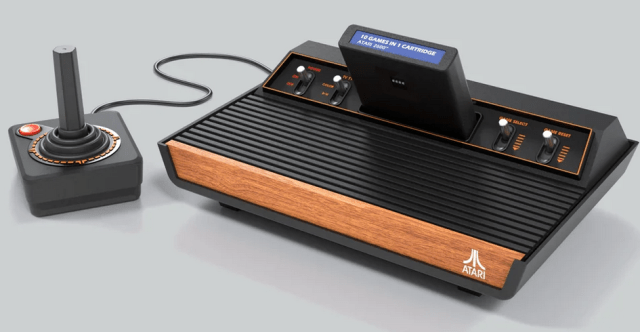Why Don’t Other Companies Do That? (Part 2)

*If you haven’t read the first part of this article you can do so here
We’re back with the second part of the piece probing the decisions of experienced business-minded people, those with years under their belt managing multi-million, even billion pound companies; suggesting that some guy in front of a computer screen knows better. If you haven’t read the first part then you can see it here.
Blaze and their Evercade; probably the best example of bringing retro games back to live with videogame fans today. Blaze manages to bring a big collection of games and, importantly, does so at a reasonable price. And Blaze with their Evercade isn’t the only example of retro games done right. If you look at Nintendo’s mini console powerhouses we see two massively popular nostalgia-machines that put smiles on fans’ faces and Nintendo’s too—each mini console sold literal millions. The NES and Super Nintendo minis were great examples of relatively cheap (emulated) answers to scratch the retro game itch while presenting it in an attractive and high quality package (well, as long as you ignore the NES controller and it’s two inch wire).
But what about a higher-end machine. What could a big company do if they really put their weight behind something like an Evercade, one that had a back catalogue that meant software for the machine would be ready to go like Nintendo’s mini’s did. Well we sort of already have had that from Atari and their obsessive (in a positive sense) drive to awaken the sleeping giant of videogames. It hasn’t gone as well as Atari would have liked, what with the Atari VCS seeing production cease—though I do only say sort of. The VCS was something a little bit different, it was supposed to bring Atari to people but in a modern style, with revamps of older titles that have become the Recharged Collection; but the mini console popularity pop was driven by a purely retro focus. Evercade has managed to do both, with classic games and new independent titles coming to the platform. I think that if a company was willing to marry those two approaches, the retro with the revamped, they could see real success, and I think Sega would be the company to do it.
Yes, all of this has been leading up to another opinion added to the pyre of ‘Sega should make consoles again’, but I think this idea is a little different.
Sega is in a very different position to Blaze. Unlike the Evercade creators Sega has a massive collection of games with a massive fanbase to boot. Where other companies would need to look for licences they could cobble together, or even undertaking making a bunch of games themselves, Sega could produce a new console with more games at launch than you have in your Steam library. Financially Sega is in a different stratosphere to most games companies, and they have the experience of engineering, quality testing, and shipping a console around the globe. These are things that could and do fell companies on the regular, but Sega should be able to handle often unconsidered pitfalls of bringing a product to market.

There’s something else that Sega has going for them though, and that’s the current state of emulation. If Sega really wants to bring the broad selection of their games to a new platform while trying to keeping costs down for both them and the customer then emulation is the way to go. Any number of emulation consoles are out there for retro game fans to get their fix of 8, 16, 32-bit and well beyond. FPGA could be one route Sega could go, but it ups the cost, so software emulation would be the way to go. Simple emulations machines can be picked up for under £200 that run everything you could want from Sega’s golden age of 16-bit treasures, as well as everything else. But why stop there? We talked about Evercade, and the budget console platform doesn’t just run emulated games; it even has some titles that have been ported to run natively on the Evercade EXP and VS. Sega could knock put together a higher-end emulation machine, perhaps closer to a mini-PC, and one that has a Blu-ray drive. Imagine that, an official, Sega produced emulation console, running on its own simple operating system (possibly Linux based), and with Sega’s back catalogue on Blu-ray. You could have a Golden Axe collection, with every iteration of the series on a single Blu-ray disc, maybe even with extras to unlock like artwork, or even the other games. Sonic could be in for the same treatment, even to in two volumes, 2D and 3D; the same thing for Shinobi and so many other games. And what would stop Sega from then developing smaller budget games that come out on multiple platforms, including this hypothetical console? Sega could do all of this, and with the reduced prices that Sega could get on components with their buying power they could probably put a machine like this together with a price of under £250, and surely under £300.
I can tell you I would buy that. I would throw my money at Sega for a machine like that. But what about you? Would you buy a brand new Sega console. If you’ve read this whole article I think I can already guess the answer.
Playing videogames, writing about videogames, considering videogames—that about sums it up. Videogames are the one hobby that I’ve kept since I was only little, zapping ducks on the NES or knocking out MR. X. And when I’m not enjoying classics from the bit generation of games or checking out those earliest of polygons, I’m probably playing something from today’s age of modern gaming: if I’m not complaining about it. Something I’m doing at the moment? Returning to the many Final Fantasy games on the Switch to complete a couple more.







